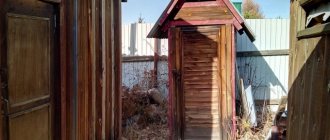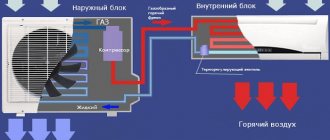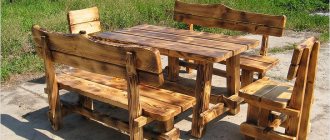Prepare your lawn for winter
The first step is to clear the lawn of debris. A layer of fallen leaves or branches will inhibit photosynthesis and can also provide an excellent home for pathogens and pests. The lawn also needs to be mulched to preserve the sown grass and reduce moisture evaporation. Do not forget about cutting the grass - this procedure in the middle zone can be carried out until the end of October. Moreover, the mowing height should be 1-2 cm higher than usual (i.e., if during the season you cut the lawn to 4 cm, now the grass height should be 5-6 cm).
In the first half of October, do not forget to feed the lawn with phosphorus-potassium or special autumn lawn fertilizer (according to the instructions). If holes and bald spots have formed on the cover, they need to be “patched” by adding soil and sowing seeds.
- Preparing the lawn for winter: what to do in the fall so that the lawn winters well
Helpful tips on how to winterize your lawn comfortably.
What to do with shrubs and trees?
It is necessary to do sanitary pruning: remove dry, diseased and low-yielding branches, and also form the crown of trees and shrubs. All this must be done before frost. The trunk circles of fruit trees must be carefully loosened, shed generously, and insulated with manure or grass.
Autumn is the time to plant new and replant old trees and shrubs. While there are no frosts, you can plant trees and shrubs with an open root system, and after frost it is better to plant trees and shrubs with a closed root system.
It is important to remember: trees and shrubs should be replanted when the foliage has completely fallen.
Check the well
The well does not require special preparation for winter. But if the water has acquired an unpleasant odor of hydrogen sulfide (the smell of rotten eggs) or a cloudy sediment, cleaning and disinfection measures must be taken. You can probably handle a small well (2-3 rings) on your own. Using a drainage or pump pump, pump out the water, go down into the well, and clean the walls of dirt. Then disinfect the well.
To disinfect a well, you can use tablets designed to purify pool water. They are dissolved in a bucket of water (1 tablet per 1 well ring), then the mixture is poured into a well filled with water and left for 6-8 hours. After this, the water is pumped out again.
If you clean the well in the fall, it will not be necessary to do this in the spring - regular disinfection is sufficient.
Digging up the site
Many summer residents argue over whether it is worth digging up their plot for the winter. We have already spoken on this topic several times, and also found out the advantages and disadvantages of digging up the site, and therefore we are not talking about that today. At the moment, we are simply considering the need to treat the vegetable garden, flower beds and palisade if you are a supporter of digging.
It is necessary to qualitatively clear the soil of weeds, as we have already discussed above, sharpen the equipment using the methods suggested earlier, take gloves and shoes that are more comfortable, and literally complete the necessary task in one or two times.
Yes, right now or towards the end of autumn, but not at the moment when the first frosts hit, otherwise a lot of strength and energy will be required, and in general, the work may not be completed.
Preserve the septic tank
If you do not plan to use the septic tank at your dacha in winter, it needs to be mothballed. To do this, 2 weeks before pumping, clean the tank with bacteria by pouring them into the sewer. Then pump out the sludge from the container and rinse the equipment with water. You can also call sewer specialists for pumping.
After all procedures, the tank must be filled with water, otherwise the septic tank may become deformed under the influence of low temperatures.
- How to dispose of wastewater on site
Wastewater recycling is a constant problem for owners of country houses. However, such waste can be disposed of relatively safely.
In case of severe frosts
Frost poses the greatest danger to a residential building, and especially to water supply and heating systems.
Since I left the house without gas heating, I had to drain the system. I did this using the boiler pump, then disconnected the pipes and blew them out with a compressor. When I was doing this procedure, the thought came to me - pour antifreeze into the heating system and forget about all the problems. But I didn’t risk doing this because I don’t know how antifreeze will behave in a heating system. If anyone uses anti-freeze in their heating system, please write the pros and cons of this method.
I did the same with the water supply. I disconnected the water line and drained the water from the pipe. In the internal water supply system, I also removed water with a compressor. I drained the water from the toilet tank, dried it, and treated the tank fittings, especially the rubber parts, with aerosol silicone lubricant. This was done so that the rubber did not dry out and the mechanism remained in good working order.
Since the temperature in the living room cannot be lowered to negative temperatures, the house had to be heated with oil-based electric heaters. More precisely, not to heat, but to maintain a positive temperature. The oil heater has no exposed heating elements, is relatively safe, and can operate for a long time without supervision.
I bought two heaters and placed one in the living room and the other in the hallway. I’ll say right away that I bought expensive devices. When it comes to safety, it is better to pay more and buy a quality item.
I left the internal doors in the house open and blocked the ventilation shaft so that the heated air did not escape from the room. I set the heaters to 70% power to prevent overloading the device or network. The furniture was moved 15 cm away from the walls, electronics and household appliances were unplugged from the sockets and covered with cellophane film.
Prepare the water supply
The water supply system at the dacha is especially vulnerable in winter, so you need to take care of its safety in advance. If you do not plan to use it in winter, then the water from the pipes will have to be drained. To do this, you need to turn off the water supply and open the drain taps at the lowest points so that the water comes out by gravity. If there are no drain valves, use an auto compressor. To blow out the pipes in your dacha for the winter, close all the valves on the manifold and attach a compressor to the pipe. Then you need to create a pressure of 3-4 atmospheres and open one of the collector taps - under air pressure, water will come out of the pipe. Repeat the procedure with each line.
To protect the pipeline outdoors and in unheated rooms, leave the valves slightly open and dismantle the mixers. Also remember to drain the water from the filters.
If the pipes are not buried deep enough, they must be insulated. To do this, place sheets of expanded polystyrene or polystyrene over the place where the pipes pass and secure it by pressing it down with bricks and digging it in.
Preparing vegetable storage for winter
Cellars and pantries, which we talked about just a few articles ago, require mandatory preparation before the cold period. On the last sunny days, it is necessary to have time to properly dry the storage, open the doors wide and, after cleaning, leave the storage for a day, or even two, for ventilation. At the same time, the walls, floor, ceiling, doors of the storage room, as well as all its shelves and drawers should be disinfected.
Don’t forget also about vegetables and fruits, which it wouldn’t hurt to sort through if possible. It is better to remove those fruits that seem slightly spoiled from the cellar or pantry; only high-quality harvests should be stored further. But do not forget that for this it is necessary to comply with storage conditions.
Treat basement and cellar for mold
The end of the summer season is the right time to treat the cellar and basement so that a “mold kingdom” does not develop in them over the winter. First of all, in dry weather, take all the jars outside and dry the room, and then treat the walls and other structures with an antiseptic (this procedure must be repeated every few years).
As an antiseptic, you can use a solution of copper sulfate (100 g per 1 liter of water).
Those who like to solve problems in a radical way recommend using a sulfur smoke bomb to treat the basement. Seal all ventilation holes in the empty room, cover metal parts (if any) with polyethylene. Check that there is no one in the house (you will have to leave it for a day), and then light the fuse of the checker, go out and close the doors tightly. Upon return, thoroughly ventilate all areas.
- Sulfur smoke bomb - instructions for use in the cellar and greenhouse
We tell you how to use a sulfur bomb when processing a cellar and other buildings on the site.
How to prepare a bed for winter sowing? What and when to sow?
Typically in the fall (late October-early November), gardeners plant lettuce, parsley, dill, hyssop, spinach, wild garlic, as well as carrots, garlic, beets and radishes. It is better not to place such crops in low, waterlogged areas or on sloped areas. In the first case, moisture can play a cruel joke - the seeds will begin to germinate and the seedlings will freeze when it gets cold, and in the second case the seeds can be washed away by melt water. So you should choose a high, sunny, well-warmed area.
“We plant seeds in larger quantities (twice) than in the spring, and 1.5-2.0 cm deeper. It is very useful to mulch the winter crops with sawdust and peat in a layer of up to 2-3 cm. With the onset of persistent autumn cold weather, the crops can be covered spunbond. The question arises: we spend more seeds and plant them deeper, so what are the advantages? Shoots from winter sowing are obtained earlier than from spring sowing. An additional advantage is the higher resistance of seedlings to low temperatures,” comments Lyudmila Buryakova.
There is no need to water when sowing in autumn; the soil should be dry. You need to make grooves in advance and prepare peat - it creates a loose layer over the seeds, through which the seeds will easily germinate in the spring, although the soil around the site will become very compacted over the winter.
The soil for winter sowing is usually prepared in advance. The area is dug up, weeds with rhizomes are removed. Next, you need to fertilize: add humus (about 8-12 liters or a bucket per m²), lime (about 0.5 liters per m²) and phosphorus-potassium fertilizers (10-15 g per m²) for digging. Then you should make the grooves. Peat for sprinkling seeds before sowing is kept in a warm room.
Dill, parsley, coriander are sown to a depth of 0.5-1.5 cm, increasing sowing rates to 4-6 g/m² for dill, 0.6-1.5 g/m² for parsley, up to 5 g/m² for coriander .
“Often gardeners sow like this: they scatter the seeds around the garden. In this case, dill sprouts well in the spring, but when cultivating the soil it is often damaged and killed. Therefore, it is better to sow in winter, as in spring, in rows every 10-15 cm - dill, after 25-30 cm - parsley and coriander. Hyssop is sown in rows every 15-20 cm, to a depth of 0.3-0.5 cm,” says Lyudmila Buryakova.
Wild garlic seeds need stratification to obtain seedlings, which is why late autumn is the optimal time for sowing them. Before sowing, the soil must be loosened thoroughly; the seeds must be covered with peat, compost or other mulching material to a depth of 1 cm.
Pre-winter sowing of carrots should be carried out 10-20 days before the final onset of cold weather. Dig up the soil, make grooves at a distance of 15-20 cm and a depth of about 1 cm, spending up to 1 g of seeds per m². Then the summer residents wait until the soil has completely set, and place the seeds in furrows and cover them with peat.
A day length of less than ten hours stimulates the formation of root crops in radishes, so winter and early spring sowing times are often practiced. The sowing depth of radishes is 1-1.5 cm, up to 10 g of seeds are sown per 1 m². In spring, thinning is carried out until the distance between plants is 6x6 cm.
Mid-season beet varieties with a rounded fruit shape are sown in rows 20-30 cm apart to a depth of 3 cm.
In the southern regions of Russia, it is possible to sow cabbage, peas, and plant potatoes and onions before winter to obtain extra-early harvests in May.
Ornamental crops can also be sown before winter. For the germination of seeds of most perennial flowers, exposure to low temperatures is required - stratification, as a result of which winter sowing gives the best results.
“In the fall, you can sow low-growing perennials for the alpine hill - aubrietta, saxifrage, sandy and Carthusian carnation, arabis. Aquilegia, delphinium, armeria, helenium, gentian seven-parted, Carpathian and peach-leaf bells, and meadowsweet sown before winter germinate well in the spring and produce strong plants. And if the seedlings are covered with film in early spring, flowering may occur in the autumn of the first year. Annual flowers (calendula, poppy, godetia, gypsophila, lavatera), which reproduce by self-sowing, can also be sown for the first time before winter,” notes Lyudmila Buryakova.
Protect your home from rodents
Mice in the countryside in winter can damage furniture and other property. To protect your country house from small rodents, we recommend using special repellers. Their advantage over traditional mousetraps is that the animal will not die - it will simply bypass your house. Agree, there is little pleasure in arriving at the dacha and finding mousetraps with the remains of rodents in the house.
Pour stocks of pasta, cereals and other potential mouse delicacies into sealed glass or metal jars in advance.
Cleaning the area from weeds
It is very important to control weeds in a timely manner. In addition to the fact that they are removed from the soil surface throughout the warm season, it is also necessary to destroy those that are ready to scatter seeds in late autumn. In addition, weeds are often carriers of diseases; rodents and insect pests overwinter in heaps of mown plants, and therefore this must be prevented.
Take the weeds into piles, dry them for several days and simply burn them at any convenient time. This method of weed control is the most correct and effective.
Preserving the toilet in the country for the winter
It is very important to ensure that the toilet does not burst during the winter due to severe frosts. As in the case of pipes, the water needs to be drained from the tank and from the overflow (it will be more convenient to scoop it out). After this, the hole must be plugged with an empty plastic bottle. We do not recommend pouring non-freezing liquids into the toilet, as this can lead to damage to the sewer system.
- 5 proven ways to get rid of odor in a country toilet
We solve the problem of eliminating odor in an outdoor toilet.
Do a lot of laundry and wet cleaning
Before leaving, be sure to do a thorough cleaning of your country house. Dust, beat the carpets and rugs, then wash the floors in all rooms. Wash your clothes, table linen, bed linen, bedspreads and other textiles or take them with you to wash in the city. Dry all items thoroughly and only then put them in the closet. To get rid of musty smells, place scented sachets or dried lavender sprigs on your shelves. Lavender will also protect woolen items from moths. Then cover the furniture with old sheets or plastic.
Wash and dry the dishes, then store them in a cupboard or cardboard box. Wash the refrigerator and wipe down the light fixtures. Remove all food waste and place cereals, pasta, salt and sugar into glass jars with lids.
Take care of your TV
If you are not afraid to leave the TV at the dacha in winter, prepare it for your long absence. Remove the batteries from the remote control (they may leak), disconnect all cables from the device and pack the TV in dry material (cloth, paper).
Household appliances should not be left near heating appliances.
When you come to your dacha in winter, do not plug in the TV right away - it needs time to “warm up”. Otherwise, a short circuit may occur due to condensation accumulated inside.
Checking and preparing external drainage systems
In order to prepare drainage systems for winter, you need to check their condition and carry out a series of preventative maintenance.
Examination:
You need to make sure that all pipes and gutters are intact and have no cracks or breaks. If any element has cracks, it must be replaced.
It is important that the gutters do not sag in the space between the brackets, otherwise in winter in this place the gutter may simply bend to the side or completely collapse under the influence of snow loads. If you notice the slightest sagging, then most likely your brackets are installed with a larger pitch than required (the pitch is different for each system). Therefore, be sure to install intermediate brackets in sagging areas before winter.
Preventative work
- installation of anti-icing systems;
- installation of snow guards.
Installation of anti-icing systems is done to prevent snow and ice from accumulating in external gutters in winter.
To install an anti-icing system, a heating cable* is laid along gutters, drainpipes, and places where snow accumulates on the roof. The optimal power of the heating cable is from 30 to 60 watts per linear meter of eaves gutter or drainpipes. The cable is secured in the gutter using special fasteners; they are mounted in increments of 25–50 cm.
Cables are installed along the entire path of water drainage - from horizontal gutters to the drain - the exit from the drainpipe, and if there is an entrance to the storm sewer, then to the entrance to the collector (below the freezing depth). The heating cable in the gutters is secured with brackets, the direction of the fastening order is from the power wire. Fastening elements provide equal spaces between the lines of the heating cable (there are two of them - see figure). A chain with a fixed heating cable is pulled through the drainpipe, and its upper part is secured with an element - a pin.
Gutter insulation
After installing the heating cable, you need to measure the insulation resistance and resistance of the heating cable - it must comply with the standards (the standards are indicated on the tag of the adapter). The cost of a heating cable is from 4 dollars/l.m., and a self-regulating cable – from 20 dollars/l.m.
*Note:
There are two types of cables. The first type of cable is a heating element, similar to the one used in household heating devices, for example, boilers. The second type of cable is self-regulating. Its main element is a semiconductor matrix that responds to air temperature. The heating cable includes thermostats, fasteners, temperature and humidity sensors.
The anti-icing system* works automatically, turning on if the temperature drops below +5 degrees and there is water in the drainage system. The thermostat monitors the air temperature and the presence of water; it turns on the system when the temperature drops below - 5 degrees.
When installing the system, the temperature sensor is installed so that it is not exposed to direct sunlight. During installation, humidity sensors are installed in the lowest places of the eaves gutter or in places where there is the greatest likelihood of water appearing.
*Note
- Anti-icing systems are not used at temperatures below -18...-20C, since ice does not form at this time. In addition, melting snow at such temperatures requires large electrical powers.
- The anti-icing system can be installed on both metal and plastic gutters.
- These systems are designed and installed by specialists.
Installation of snow guards on the roof
To prevent the snow from sliding like an avalanche onto the gutters and from clogging the gutters after snowfalls (for reference: on a roof slope with an area of 40 sq.m., from 4 to 8 tons of snow can accumulate, that is, 100-200 kg/sq.m.), on snow detainers are installed on the roof.
The snow retainer is installed at a distance of about 350-500 mm from the cornice and parallel to it. If the length of the slope is more than 8 m, an additional snow retainer is installed; in addition, snow retainers must be installed above the roof windows.
If the roof is made of metal tiles, then installation of snow guards can be done on top of the metal tiles.
If the roof is made of flexible tiles or natural ceramic tiles, snow retainers must be installed during the process of laying the roofing material. If the snow guard is installed after laying the roof, you will first have to dismantle the roof covering along the perimeter of the roof, then install the snow guards, and then re-lay the roof covering.
The following snow guards are commonly used:
Tubular (can be installed on top of metal tiles). The cost of a tubular snow guard 3 m long starts from $50.
Corner (can be installed on top of metal tiles). The cost of a corner snow guard 3 m long - from 20 dollars.
Lattice (they are installed on natural cement-sand tiles simultaneously with the installation of the roof, so they are more suitable for houses under construction or renovation). The cost of a lattice snow guard 2.5 m long is 110 dollars.
Checking and preparing electrical systems
An inspection is carried out and preventive measures are taken to prepare the home's electrical system for winter.
Examination:
- Check hidden wiring, wire insulation: to do this, you need to measure the insulation resistance in accordance with the “Rules for the operation of consumer electrical installations” - this can be done by a licensed organization.
- Check the fastening of switches and sockets: do they heat up, what is the density of contacts connecting wires to distribution and installation equipment.
- Once every three years, you need to measure the load on the wiring*, especially in houses that are more than 20 years old, where the load was originally designed for 2 kW. As the load on the wiring increases, it heats up, melts and destroys the insulation. The load on the wiring increases if several additional electrical appliances are connected, for example, for heating. A breakdown and short circuit occurs. The consequences of a short circuit can be different - from tripping the input circuit breaker or fuses (the room is de-energized) to a fire.
- Check whether the contacts on the shield are clamped, especially on the neutral wire. If the neutral wire is not clamped properly, then under load this can cause “phase imbalance” due to which the equipment fails. Therefore, it is necessary to pressurize both phase and zero at least once every 2 years.
- If the machine has been knocked out over the course of a year, then consider replacing the machine with either a better one or a higher ampere one (for example, from 10A to 16A).
*Note:
Specialists check the load on the wiring. An electrician, using special equipment, can find a fault in a hidden electrical network located in walls, ceilings, floors, etc. The cost of checking the load is 8 dollars.
- Check the condition of the wires:
You need to open the sockets (remove the socket covers) and see what the wire looks like. If the insulation is charred and crumbling, then the wiring needs to be changed. If the ends of the wires have a bluish or black coating (traces of tarnish), then the outlet is overloaded with electrical appliances, and you need to reduce the number of electrical appliances on this outlet. If the socket sparks when the plug is plugged into it, then this is the result of loosening of the threaded contacts (they become loose due to frequent decreases and increases in temperature), and they need to be tightened.
*You should not repair broken sockets, switches, plugs yourself; it is better to buy new ones.
- You can check the voltage* yourself.
Open the socket. Using a tester, check the phasing: the supply wire should be on the right, the neutral wire should be on the left. It is necessary to check the presence of grounding, and at the same time - the operation of emergency protective devices - a breaker or an RCD. On the automatic machine and on the RCD there is a button (on the machine itself) with the inscription “Test, if when you press the button the machine is triggered (knocks out), then it is working, if not, it needs to be replaced.
*It is better to entrust this check to electricians.
Preventive measures:
- If possible, install an alternative energy source - for example, an electric generator based on an internal combustion engine or a wind generator, since there are still problems with power outages (by law, residential private houses can be cut off from electricity for up to a day during repair work).
- Buy spare fuses, since during frosts additional electrical appliances for heating often turn on, and this can lead to fuse failure (if you install a bug, that is, an uncalibrated fuse link, this can lead to a fire if the electrical network is overloaded).
- It is advisable to always have spare bulbs available.
Wash and dry everything
Yes, it’s not just basements that are susceptible to mold. In an unheated house, the humidity is high, so take care to ventilate the rooms. Pillows, blankets, bed linen, curtains, tablecloths - all this should be washed and dried. When putting clean items in the closet, line them with silica gel (in bags) and scented sachets (juniper or lavender branches are also suitable) to prevent the fabric from becoming damp.
Before leaving for the city, oil the keyholes and door hinges so that the doors open normally in the spring.
Gutter and roof cleaning
In autumn, leaves and dry branches fall on the roof, and with rain, all the debris accumulates in storm drains and gutters - they need to be cleaned. If a plug of leaves freezes in a drain, the pipe will burst, and in the thaw, melt water will flow through the storm drain and soak the facade of the house.
In a snowy winter, the roof must withstand a thick layer of snow and icicles, so the roof is carefully inspected and repaired. Sometimes there is no time or money for a full repair; roofing material will help. The roll is rolled out over the roof covering, the sheets are laid out overlapping, and secured with slats or fasteners. Locally sealing the roof with rubber patches made of thermoplastic rubber will also help - a piece is heated, applied to the hole and pressed.
In regions with snowy winters, snow blowers on the roof will come in handy. The devices will ensure the removal of a layer of snow from the roof without consequences. It is better to remove the canopy, but flat roofs will have to be cleaned - a visit to the dacha cannot be avoided.
Remove tools and building materials
Surely every summer resident has a secluded corner in his yard, in which lie boards, beams, pipes and other building materials, waiting “in the wings.” It's time to sort through the "stocks". Conduct an audit - perhaps something needs to be thrown away? Rotting boards and cracked pipes are unlikely to be useful to you on the farm. Place the remaining building materials under a canopy or treat them with an antiseptic and cover them loosely with film to protect them from rain. Garden tools and put them in the utility room. Useful tips on storing garden tools await you in our materials:
- 7 solutions for compact storage of garden tools
Can't find things in the shed or at home? Are you tripping over a forgotten rake? Get your tools in order quickly using ready-made solutions!
- How to store garden equipment in winter (infographic)
Minor or major repairs, cleaning, lubricating, sharpening cutting parts - what else needs to be done while garden equipment is idle in winter?
Fertilizing the soil in winter
Approximately with the previous processes - cleaning and digging, it is necessary to add fertilizers to the soil. Over the spring and summer, she gave almost all the useful elements to the plants that we grew, and therefore the earth needs replenishment. To tell the truth, it’s not even so true for the land itself, but for the crops that we will plant next spring.
Use organic fertilizers, complex fertilizers, mineral fertilizers and homemade fertilizers, but carefully rate them and be sure to follow the rules for fertilizing the soil. It is very important to know not only the name of the fertilizer and the amount that needs to be applied, but also the compliance of these standards with the plants that will be grown in this place.
Take care of protecting your home
Unfortunately, the reality is that there are no fewer people wanting to make money at other people’s expense. Holiday villages are still at risk when it comes to theft. Unscrupulous “comrades” are ready to grab not only obviously valuable things, for example, equipment, but in general everything that is “badly lying” (and sometimes not lying at all, but literally dug into the ground). What to do? There are enough options: alarm system, video surveillance, bars on windows, high-quality locks and high fences.
What are the consequences of lack of preparation?
Heat loss through enclosing structures of all types is a natural phenomenon that is pointless to fight. All efforts are aimed at reducing the amount of heat generated, that is, increasing the energy efficiency of the house. This result can be achieved by creating a closed thermal insulation loop. Sealed openings (windows, doors), insulated ceilings or roof, if we are talking about the attic floor, an insulated facade or one that initially complies with thermal resistance standards - an equally warm house with minimal heating costs. Taking into account the length of the heating season in most regions and the high cost of energy throughout the country, the importance of reducing costs on this item is difficult to overestimate. But even for houses that are built with a view to maximizing heat loss reduction, this indicator may increase during operation. And most often there are two main reasons:
- window;
- facades.
Window
With the advent of metal-plastic window systems, the samovar paste with paper in the fall has sunk into oblivion, and the need to remove all this splendor with great difficulty in the spring. Despite the many advantages of modern glazing, the “set it and forget it” attitude is not the best option. After all, it is through the windows that you can “heat” the street all winter.
Andrey DmitrievSika technical department specialist
In autumn, it is necessary to pay attention to windows, since heat loss through poorly sealed windows can reach 40%. As a rule, the main reason for cold indoors lies in the gaps between the window frame and the wall or sashes. Sometimes such gaps are sealed only with polyurethane foam, which after some time begins to crumble under the influence of UV radiation and precipitation, thus losing its thermal insulation properties. In addition, if the seams are poorly sealed, then moisture can get into them, which will lead not only to heat loss, but also to the appearance of mold and mildew in these places.
Facades
Brick, stone, concrete and plastered facades are consistently popular in private buildings, and they are not going to lose their position. And although all these surfaces are characterized not only by presentability, but also by strength and resistance to weather factors, their “Achilles heel” has not escaped.
Andrey DmitrievSika technical department specialist
In autumn, the amount of precipitation increases, which leads to abundant absorption of moisture into the bases of facades. Thus, moisture remains in the facade until spring, going through many freeze-thaw cycles, which leads to the gradual destruction of the facade. Also, moisture can seep into the insulation, which will reduce the thermal insulation properties of the house. In addition, on such a facade the likelihood of efflorescence, mold and moss appearing increases, which not only spoils the appearance, but also destroys the facade.
The results of the action of water absorbed into the walls in the spring are visible: swelling of the plaster, cracking concrete, and peeling facing brick.
Depending on the quality of the masonry material, even after the first season, either completely or partially exfoliated fragments may appear on the façade. Efflorescence, at first glance, is not so dangerous, and mainly worsens the decorative effect, but only at first.
Crystallizing on the surface, the salts gradually lead to the destruction of both the masonry material and the seams. And through damaged areas, moisture is absorbed even more strongly, provoking further destruction of the facade.
Fortunately, the problems raised are not fatal and can be resolved without excessive costs or effort.











